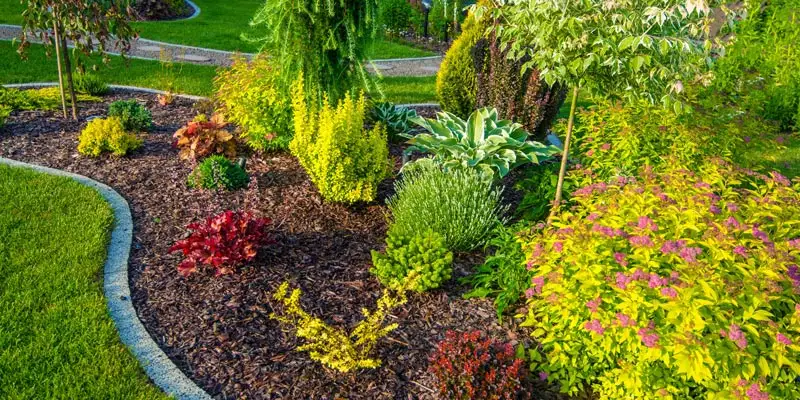The Landscape Design Ideas
The Landscape Design Ideas
Blog Article
The 45-Second Trick For Landscape Design
Table of ContentsNot known Facts About Landscape DesignThe Of Landscape DesignFascination About Landscape DesignA Biased View of Landscape Design
Formal design theme. Credit: Gail Hansen, UF/IFAS The lawn is an expansion of the home where a range of tasks occur. A lawn can generally be split into three locations: public (the front yard), personal (the backyard), and service (commonly the side lawn). The location of activity locations depends largely on the kind of location, the dimension of space required, the sort of task, and the preferred distance to various other activities and frameworks (Landscape Design).
The outside wall surface of the residence often functions as the initial wall or starting point of an exterior room. Incompatible uses need to be divided, and associated tasks, such as food preparation and eating, must be assembled to make the backyard more efficient and satisfying. When making use of hardscape to develop spaces, utilize construction product similar to that used in your home for connection from your home into the yard.
Connected spaces. Credit Report: Gail Hansen, UF/IFAS Using similar hardscape attributes and repeating plants draws the eye around the yard. Crucial points along the method can be emphasized with plantings or features that draw attention and urge motion in a specific instructions. Relocating along the course takes a person from one area to the next and permits the individual to have a variety of experiences.
From a design viewpoint, plant materials have 3 significant functions in the landscape: visual, structural and practical. Aesthetically, plants create an aesthetically pleasurable environment and structurally plants organize and specify spaces.
Little Known Facts About Landscape Design.
For psychological convenience plants are used as physical or implied obstacles for privacy and security. Physical barriers block both the sight and access to an area and consist of fencings, wall surfaces and plant hedges. Landscape Design. Suggested barriers, typically reduced expanding plants, obstruct access however not the view (Figure 9). Various other functions of plants include cleaning the air, avoiding erosion and soil loss, retaining moisture in the soil, and returning natural issue to the dirt.
Physical and implied barriers. Credit Report: Gail Hansen, UF/IFAS For these factors, the sorts of plants to be used (such as trees, hedges, or groundcovers) must be selected in the beginning of planning. Plant types are selected for their functional capacities to ensure that their future purpose and needed room can be taken into consideration at the very same time.
The above aircraft, the vertical aircraft and the ground aircraft ought to all be considered to produce room. As soon as the form of a plant bed has been established, the plants must be massed (grouped) and split to achieve visual unity and the wanted amount of unit. The size of a plant mass will certainly depend upon the overall size of the lawn, the size of the specific plants in the mass, and the focus or impact preferred from the plant product.
Each plant mass is in front of, behind, or following to, one more mass. Figure 11. Horizontal plant layers. Credit Scores: Gail Hansen, UF/IFAS Figure 12. Upright plant layers. Credit Score: Gail here Hansen, UF/IFAS Repeating plants within a mass and repeating masses with comparable plants ties the yard together. The specific plant qualities should be thought about to efficiently layer and mass plants.
The Basic Principles Of Landscape Design
All plant structures start with the main framework plants, the big, mostly evergreen history plants-such as the trees and big bushes. These plants separate or enframe areas, control the size of the room, and supply the starting point for picking the proper qualities of the second layer, midground plants, for massing and infill.
Important factors in the garden ought to be highlighted by the use distinct plants, distinctive frameworks, or garden ornaments. Marking thresholds or entryways to spaces can be done with gateways, arbors, and steps, or with making use of distinct and vivid plants. The form and/or design theme of the garden will typically more info here aid establish the vital points and how they need to be highlighted.
Other essential areas in the backyard are focal factors, which is used to visually organize a landscaped area. Different viewpoints or viewpoints can reveal different compositions in the landscape that may require a range of focal points.
7 Easy Facts About Landscape Design Explained
Plant kinds. Credit History: Gail Hansen, UF/IFAS After kind, texture is the next leading feature of a plant; rugged, tool and great textures can be utilized for comparison and focus in the landscape.


The pleasant scent of plants, the noise of wind in the trees, the audio and appearance of water, and the shades and textures of sculptures, pots and garden furniture all contribute to the experience of the garden. One information that is often ignored is the impact of light on the article aesthetic appeals of the plants.
The entire yard modifications in function and look over the course of the day, and the training course of a year, as the light and temperature level change from early morning to night and period to period. Plant selection must take into consideration a plant's development price, its fully grown size and form, and the upkeep it will certainly call for.
It is very important to recognize the eventual mature size of plants so they can be positioned in the right location and spaced correctly when they are installed. Giving plants area to expand is a challenge due to the fact that the usual mature size is typically based upon optimum expanding conditions and the environmental conditions of a website may trigger a plant to enlarge or stay smaller sized.
Report this page